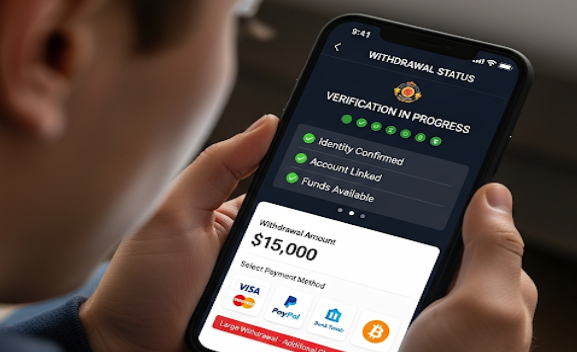 Many people enter the crypto market expecting fast profits but end up with losses instead. Prices move fast, emotions take over, and poor decisions follow. Most crypto bets fail because investors trade without a plan, manage risk poorly, or chase hype instead of logic.
Many people enter the crypto market expecting fast profits but end up with losses instead. Prices move fast, emotions take over, and poor decisions follow. Most crypto bets fail because investors trade without a plan, manage risk poorly, or chase hype instead of logic.
The good news is that these mistakes can be fixed. With a clear strategy, patience, and discipline, anyone can reduce losses and build a more stable approach. Simple steps—like setting clear goals, limiting risk per trade, and avoiding emotional reactions—make a major difference.
This article breaks down why losses happen and how to correct them before they drain your wallet. It focuses on practical actions that help turn random bets into informed decisions that protect both capital and confidence.
Key Reasons Your Crypto Bets Might Lose
Most crypto bettors lose money due to emotional choices, poor planning, and risky habits. Losses often come from chasing quick wins, ignoring risk limits, or using too much leverage on uncertain bets.
Emotional Trading and FOMO
Emotions often drive bad decisions in crypto betting. Fear of missing out, or FOMO, pushes people to buy or bet at the wrong time. They see others profit and jump in too late, often near market peaks.
Greed also plays a strong role. After a win, some double their bets without logic or analysis. This behavior often turns short-term gains into long-term losses.
To avoid emotional traps, traders should use clear entry and exit rules. They should also track their performance and take breaks after losses. Platforms that mix gaming and crypto, such as those offering spin premium slots, can tempt users to chase excitement rather than follow a plan. Discipline helps separate entertainment from investment.
Lack of a Clear Trading Strategy
Many crypto bettors lose because they act without a structured plan. They rely on luck or social media tips instead of using data and defined goals. Without a clear system, they cannot measure progress or adjust tactics.
A solid strategy includes three parts: entry criteria, risk limits, and profit targets. It should also match personal goals and risk tolerance. For example, a bettor focused on steady growth should avoid high-volatility tokens or uncertain markets.
Those who treat crypto betting like a game often fail to manage it like an investment. A written plan helps reduce guesswork and emotional bias. It also builds consistency, which is key for long-term success.
Poor Risk Management
Ignoring risk control can destroy even a good strategy. Many people bet too much on one coin or event, leaving no room for error. A single bad move can wipe out weeks of progress.
Smart risk management starts with position sizing. Limiting each bet to a small part of total capital protects against large losses. Stop-loss orders can also help lock in profits or prevent deep drawdowns.
Diversification across coins, markets, and even betting categories adds another layer of safety. It spreads exposure and reduces the chance of a total loss. Risk control may seem boring, but it keeps traders in the game longer.
Overleveraging and Impulse Decisions
Leverage can increase profits, but it also multiplies losses. Many traders borrow too much to chase fast returns. A small market move in the wrong direction can trigger a liquidation and erase their balance.
Impulse decisions make this worse. Some traders open positions without checking market trends or news. Others react to short-term price spikes instead of waiting for confirmation.
To manage leverage safely, traders should start small and use it only with clear setups. They should also avoid trading under stress or after losses. Patience and control matter more than speed in volatile crypto markets.
How to Fix Losing Crypto Bets

Traders can reduce losses by setting clear rules, managing risk with discipline, and keeping emotions in check. Success depends on structured decision-making, not luck or impulse.
Developing a Disciplined Trading Plan
A clear plan gives direction and limits guesswork. It defines entry and exit points, position size, and acceptable loss per trade. Without it, traders often react to short-term noise and make poor timing decisions.
A plan should match personal goals and risk tolerance. For example, a trader might decide to risk only 2% of total capital on any trade. This rule protects the account from major drawdowns.
They should also record each trade in a journal. Tracking results exposes patterns, strengths, and weak points. Reviewing this data helps refine future strategies and avoid repeating mistakes.
Consistency builds confidence. A trader who follows a written plan resists emotional impulses and focuses on long-term progress instead of short-term wins.
Implementing Effective Risk Controls
Losses grow fast without solid risk control. The first step is to use stop-loss orders that close losing trades before they damage the account. This tool limits exposure and protects capital.
Traders should also apply position sizing rules. Smaller trade sizes lower the impact of a single bad move. Many professionals risk only 1–2% of their account per trade.
Diversification adds another layer of safety. Holding assets across different sectors or coins reduces the effect of one poor performer. Avoiding heavy leverage also helps, since borrowed funds multiply both gains and losses.
By setting clear limits and following them, traders create a safety net that keeps them in the game long enough to learn and adapt.
Building Emotional Resilience
Emotions often cause more losses than market swings. Fear leads to panic selling, and greed triggers overtrading. Emotional control helps a trader stick to logic instead of impulse.
Simple habits can help. Taking breaks, setting daily trading limits, and avoiding trades under stress all improve decision quality. Traders should also accept that losses are part of the process.
Confidence grows from preparation. Those who study their strategy and understand their tools feel less pressure to chase quick profits. Over time, emotional balance supports steady performance and better judgment.
Continuous Learning and Backtesting
Markets evolve, so traders must keep learning. Studying new strategies, analyzing past trades, and testing ideas with historical data all improve skill.
Backtesting shows how a plan would have performed under past conditions. It helps identify weak spots before real money is at risk. Adjustments based on data, not emotion, lead to smarter decisions.
Traders benefit from reviewing both wins and losses. Each trade offers feedback that sharpens understanding of market behavior. Staying curious and informed keeps them adaptable as conditions change.
Conclusion
Smart crypto investors accept that success depends on discipline, patience, and steady progress. They avoid chasing hype and instead focus on research, risk control, and realistic goals.
A clear plan helps them act with purpose instead of emotion. They track results, learn from mistakes, and protect their funds before seeking gains.
Small, consistent wins often build stronger results than risky bets. Therefore, those who treat crypto as a long-term strategy, not a gamble, stand a better chance of lasting success.





